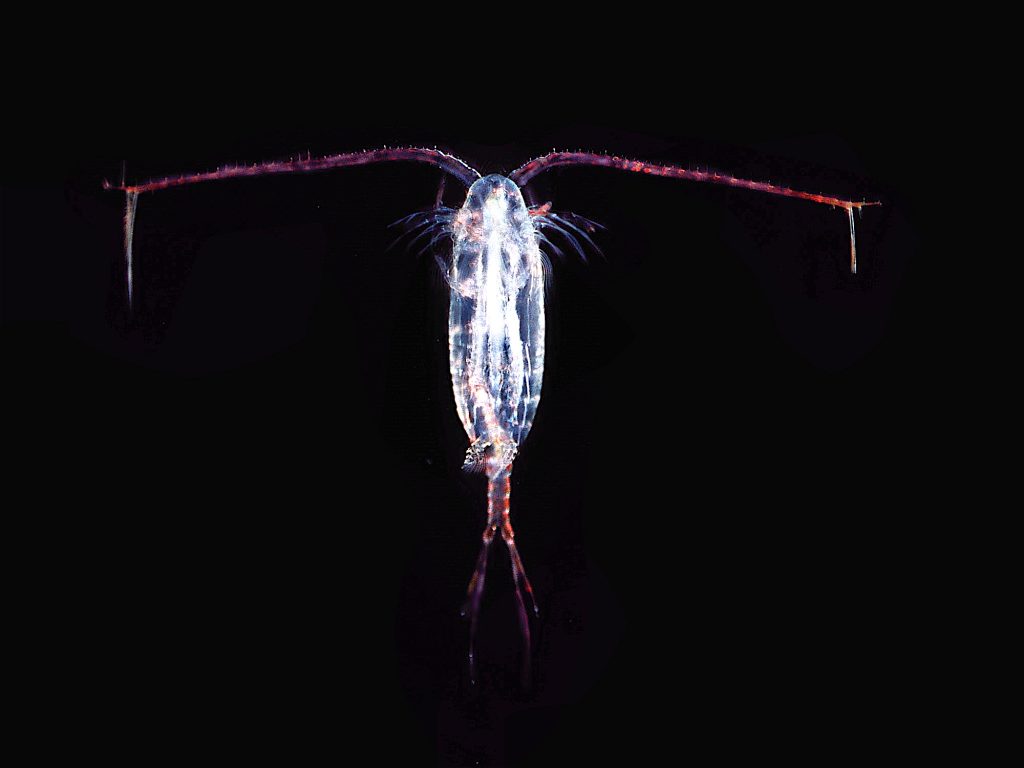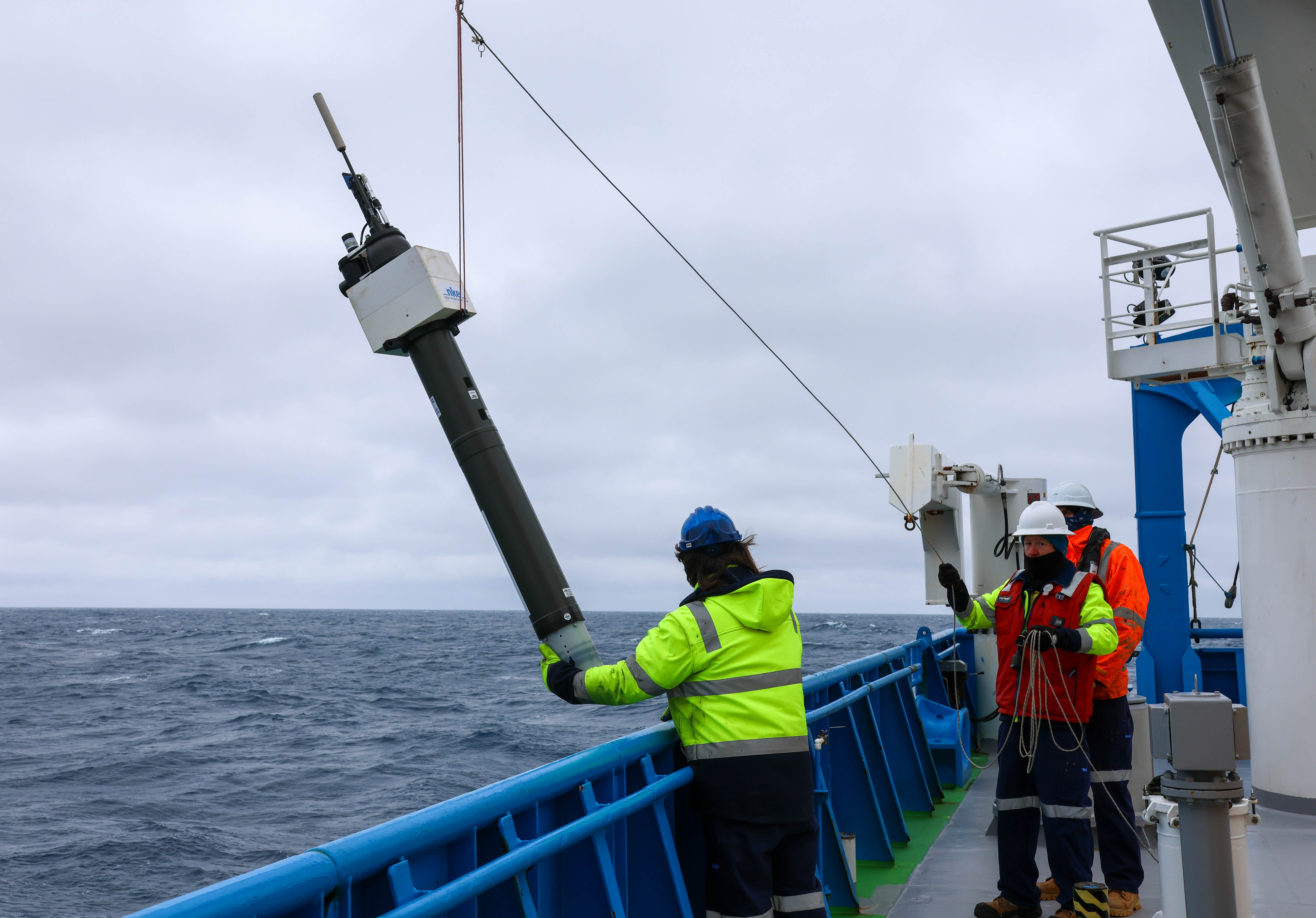Key Antarctic research awarded three ARC Discovery grants
MEDIA RELEASE
25 November 2022
Innovative research on Southern Ocean productivity and sea ice by the Australian Antarctic Program Partnership (AAPP) will advance with three Australian Research Council (ARC) Discovery projects.
AAPP leader Prof Nathan Bindoff said he was delighted that of the eight ARC Discovery projects at the University of Tasmania funded in the current round, three are part of the Australian Antarctic Program Partnership.
“It’s a major achievement to be awarded funding by the Australian Research Council as the selection process is highly competitive.”
“The ARC considered a total of 2588 applications for Discovery projects to commence in 2023, with 18 percent approved for funding.”
“My congratulations to our successful scientists, it’s a superb outcome,” Prof Bindoff said.
Led by the University of Tasmania, the AAPP works with leading research institutions to understand Antarctica’s influence on climate and sea level, the nature and impacts of Southern Ocean change, and the future of sea ice, krill and marine ecosystems.
Prof Bindoff said the vast Southern Ocean is a significant driver of global climate as it absorbs ocean heat and carbon dioxide emitted by human activity.
“These new projects will help us answer some key questions that are critical for our future, by filling in gaps in our knowledge about how the Antarctic region both responds to and regulates climate.”
Iron plankton
Marine plants or ‘phytoplankton’ are the foundation of the food chain and play a critical role in absorbing carbon dioxide and reducing the effects of climate change, yet their growth is limited by the availability of iron which is scarce in the Southern Ocean. Zooplankton, tiny animals that feed on phytoplankton, recycle iron but estimates of this process remain unclear. Currently, this leads to poor predictions of iron and carbon cycling needed for accurate climate models.

Seals with sensors
Massive blooms of phytoplankton that store carbon dioxide occur every year along the East Antarctic coastline but exactly where, and how much these microscopic climate engineers will contribute to reducing carbon emissions in the future is unknown. This is especially true for vast ocean expanses where sea ice makes observations from ships, floats, or satellites extremely challenging and expensive. Seals carrying mini-electronic sensors offer an ideal solution to help us measure the extent and effect of blooms in these inhospitable and climate-sensitive ecosystems.

Future of sea ice
Sea ice provides a critical habitat for algae and krill that feed Antarctic wildlife, while also stabilising ice shelves and influencing Australian climate. This project will assess the causes of recent unprecedented sea ice variability and change. Our results will improve projections of sea ice for the coming decades and century, leading to more accurate projections of Australian climate variability and sea level rise.

More details on the AAPP ARC Discovery projects for 2023:
Zooplankton and ocean productivity in a changing climate
Professor Andrew Bowie; Associate Professor Kerrie Swadling; Dr Lavenia Ratnarajah; Professor Alessandro Tagliabue
The scarcity of iron in the Southern Ocean limits biological productivity and carbon uptake. There is currently very little information on zooplankton iron content, yet available data point to high variability. This variability is leading to poor predictive outcomes for models of Southern Ocean iron and carbon cycling. We need to address this knowledge gap by quantifying zooplankton iron content and examining its biogeochemical and ecological impact on Southern Ocean productivity. This project will determine how zooplankton recycle iron to sustain phytoplankton growth and drive carbon uptake. The research will benefit Australia by providing new crucial data needed to refine global models that are used to understand current and future patterns of Southern Ocean productivity and Earth’s climate. Data from this project will also benefit research end-users such as the Commission for the Conservation of Antarctic Marine Living Resources by helping decision makers set krill catch limits.
Using animal-borne sensors to unravel East Antarctic coastal productivity
Dr Sophie Bestley; Professor Mark Hindell; Associate Professor Delphine Lannuzel; Dr Christina Schallenberg; Dr Esther Portela Rodriguez; Ms Esmee van Wijk; Dr Sara Labrousse; Dr Clive McMahon; Professor Fabien Roquet
This project will examine the mechanisms underpinning the high productivity in Antarctic coastal polynyas, which are ice-free oases within the sea ice supporting abundant marine life. The study expects to generate essential new biochemical and biological observations using autonomous platforms and seal-borne sensors to understand phytoplankton dynamics in these inaccessible habitats along Australia’s Antarctic Territory. Expected outcomes include novel insight into the role of iron supply from melting glaciers in supporting marine production. This should reduce the high uncertainty in prognoses for polynya activity under anthropogenic climate change, and support Australia’s international leadership in conservation and management of important Antarctic ecosystems. Innovative use of new sensors will provide cost-effective, real time, remote monitoring and translate long term to reducing uncertainties about Antarctica’s capacity to absorb CO2 in the future.
Southern Ocean Sea Ice – what happened and what happens next?
Dr Edward Doddridge; Dr William Hobbs; Dr Ariaan Purich; Professor Matthew England
This project will address our lack of confidence in future projections of sea ice around Antarctica by elucidating the mechanisms controlling sea ice in the Southern Ocean. There is low confidence in current sea ice projections, limiting our ability to predict ice shelf melt and sea level rise. This project will lead to a detailed understanding of the future of sea ice in the Southern Ocean, improving our understanding of ocean dynamics, ice shelf melt, and sea level rise. The results from this project will enhance projections of sea ice, and therefore also ice shelf melt and sea level rise. Improved sea level projections will aid policy decisions for coastal communities and inform fisheries policy and management. More accurate sea level rise and climate projections will benefit federal, state and local governments and planners, while protecting Australian sectors vulnerable to climate extremes, including coastal communities, agriculture, water management, and tourism.



